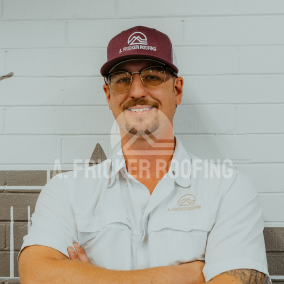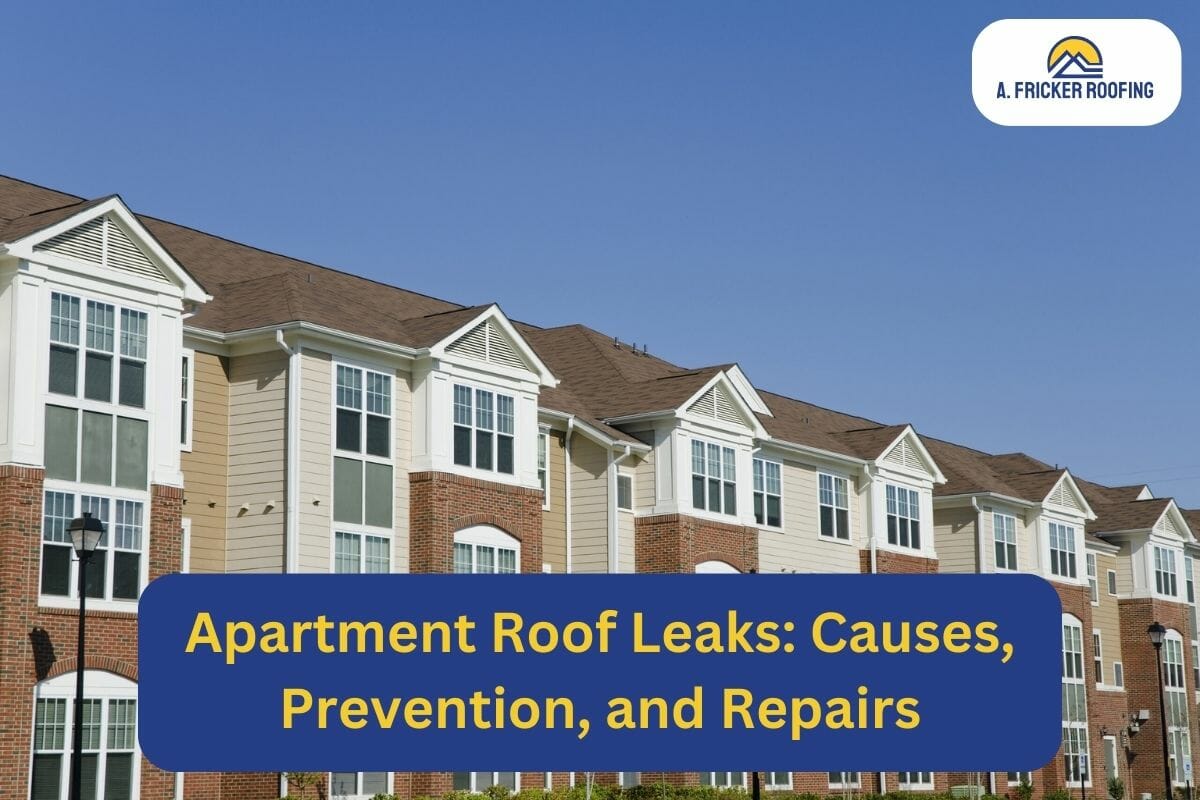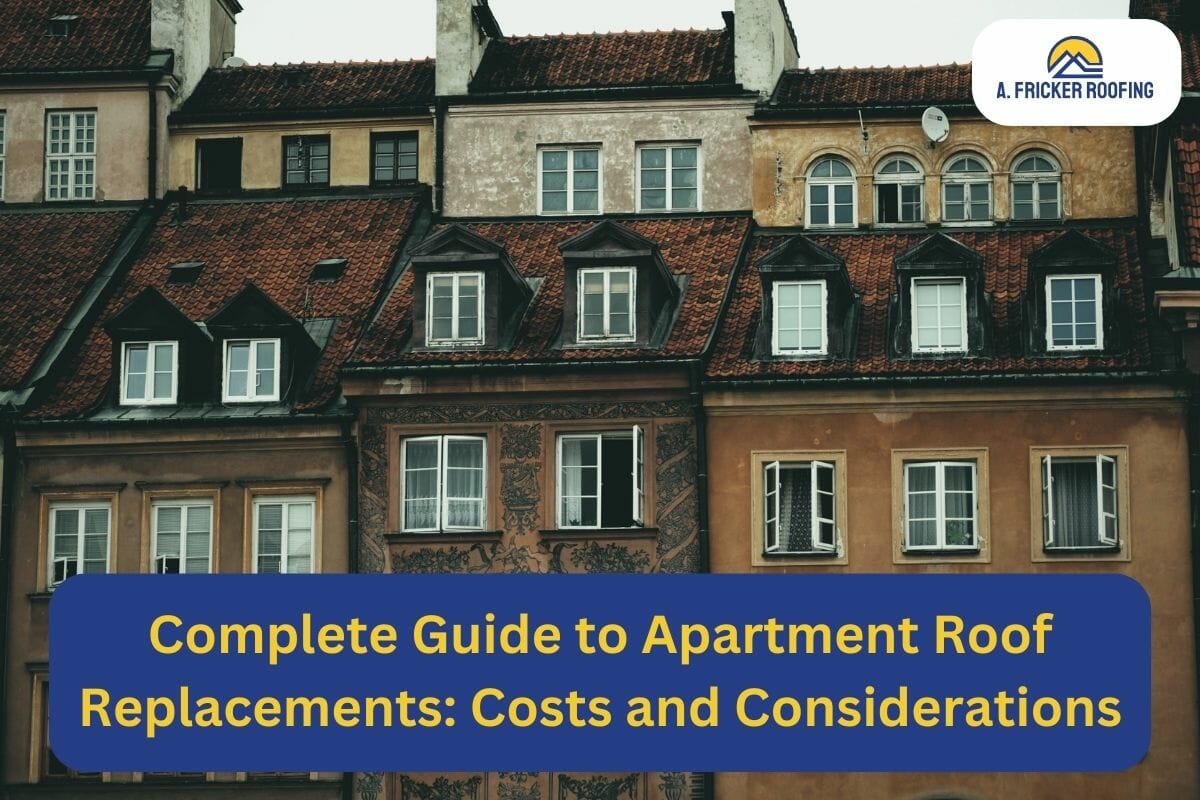
Choosing the right material for an apartment building roof is a crucial decision that can have a significant impact on the overall quality and longevity of the property. With so many options available, it can be overwhelming to determine which material is best suited for your specific needs.
However, by considering factors such as your local climate, your budget, the durability and energy efficiency of the materials, and the specific requirements of the building, you can make an informed decision that will enhance the value and functionality of your apartment building.
Common Materials For Apartment Building Roofs
1. Asphalt Shingles: Cost-Effective and Durable
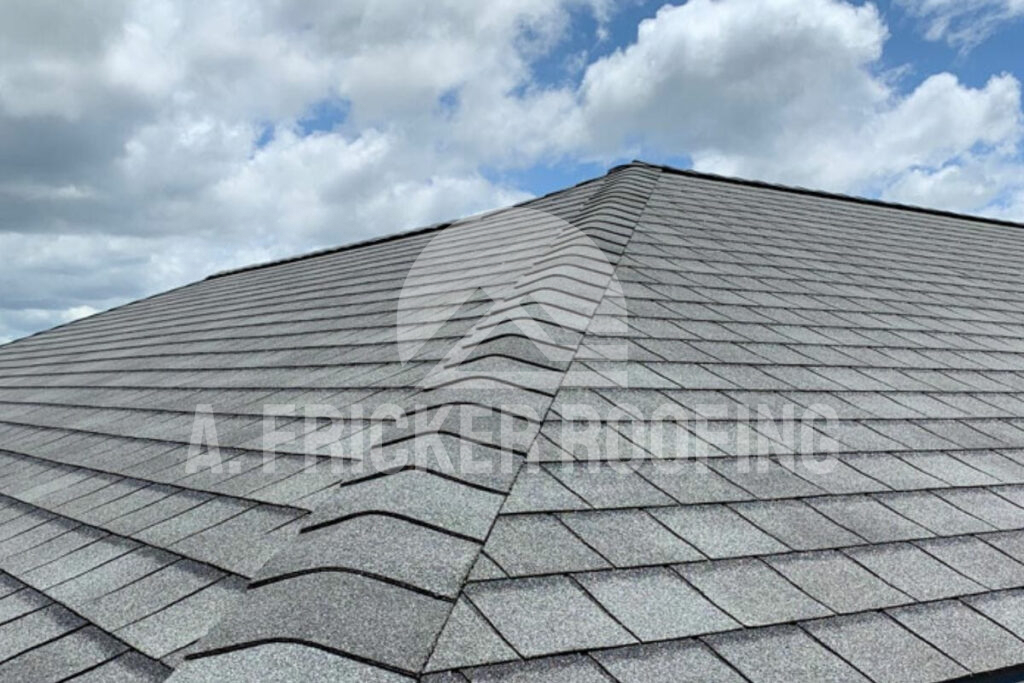
Asphalt shingles have long been a popular choice for the pitched roofs of apartment buildings, and for good reason. They strike a harmonious balance between cost, durability, and aesthetics. The upfront cost of asphalt shingles is significantly lower than many other roofing materials. This makes it a budget-friendly option for building owners. These shingles are available in various types, styles, and colors, allowing you to customize the look of your roof to match the aesthetic of your property.
Installation Cost: On average, an asphalt shingle roof installation costs between $3 to $5 per square foot.
Energy Efficiency: While not the most energy-efficient option, you can enhance energy performance by choosing asphalt shingles that come with a reflective coating, which can reduce your cooling costs.
Durability and Lifespan: Asphalt shingles typically last around 20-25 years, making them a solid investment for apartment buildings.
It’s important to get your apartment roof inspected by a professional roofer before making a final decision. The roofers will also help you choose the right roofing material.
2. Metal Roofs: Longevity and Sustainability
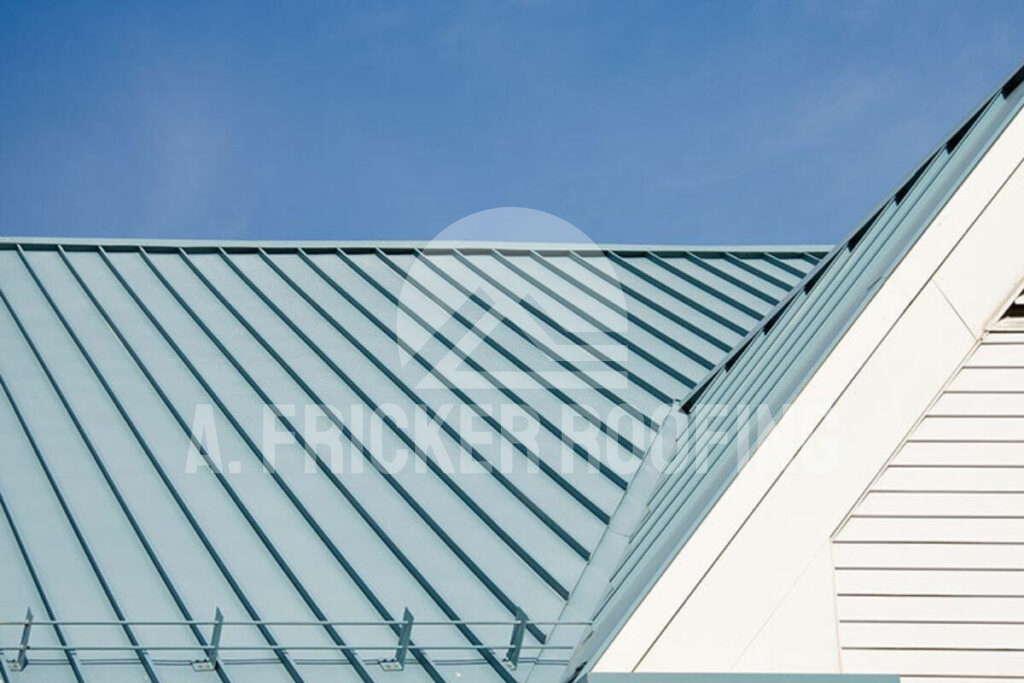
For those looking for a roofing material that combines durability with energy efficiency, metal roofing is an excellent choice. Metal roofs are renowned for their exceptional lifespan and ability to withstand harsh weather conditions. It makes them a top contender for apartment buildings in areas prone to severe weather. Metal roofs come in various styles and profiles, allowing you to choose one that suits your preferences best.
Installation Cost: The upfront cost of a metal roof is higher than asphalt shingles, averaging between $7 to $20 per square foot. However, the long-term benefits offset the initial expense.
Energy Efficiency: Metal roofs reflect heat, which can significantly reduce cooling costs in warm climates, contributing to energy efficiency.
Durability and Lifespan: Metal roofs can last 50-70 years or more with proper maintenance. It makes them a fantastic investment for apartment roofs in need of a long-lasting solution.
3. Modified Bitumen Roofs: Sturdy and Affordable
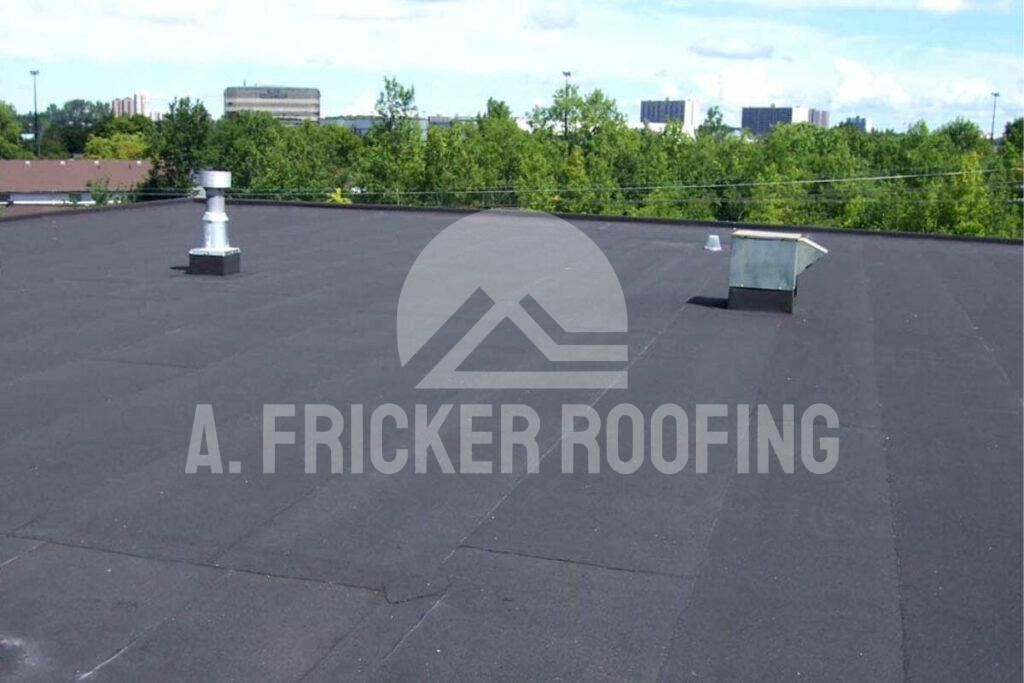
For apartment buildings with flat or low-slope roofs, modified bitumen roofs are a durable and cost-effective option. This system consists of a multi-layered, asphalt-based material.
Installation Cost: The cost to install a modified bitumen roof typically ranges from $5 to $9 per square foot.
Energy Efficiency: While not the most energy-efficient option, it provides adequate protection for flat roofs.
Durability and Lifespan: Properly maintained modified bitumen roofs can last up to 20 years, making them a practical choice for flat-roofed apartments.
4. EPDM Roofs: Resilience and Weather Resistance

For apartment buildings with flat or low-slope roofs, EPDM (ethylene propylene diene terpolymer) roofs are a resilient and cost-effective choice. It’s a synthetic rubber roofing membrane known for its durability and weather resistance.
Installation Cost: EPDM roof installation typically costs between $6 to $9 per square foot.
Energy Efficiency: EPDM roofs provide good insulation and reflect heat, aiding in energy efficiency.
Durability and Lifespan: With proper maintenance, EPDM roofs can last 30-50 years, making them a reliable choice for flat-roofed apartments.
5. Clay or Concrete Tiles: Timeless Elegance

If you prioritize aesthetics and longevity over everything, clay or concrete tiles could be the answer. These pitched roofing materials exude timeless charm and are known for their ability to withstand the test of time.
Installation Cost: Clay or concrete tile roofs tend to be on the higher end of the price spectrum, with installation costs ranging from $9 to $16 per square foot.
Energy Efficiency: The weight of these tiles helps regulate indoor temperatures, contributing to an energy-efficient building.
Durability and Lifespan: Clay or concrete tiles can last a remarkable 50-100 years, making them a great choice for apartment buildings with sloped roofs.
The roof of your apartment building serves as the first line of defense against harsh weather conditions. Making an informed choice when it comes to the roofing material is crucial for the long term health and sustainability of your apartment building.
However, before making a final decision, keep in mind the following factors:
1. Consider the Climate and Weather Conditions
When choosing the right roofing material for your apartment building roofs, consider your local weather conditions. The climate and weather in your area play a significant role in determining the durability and lifespan of the roofing material you need. For instance, if you live in an area that experiences extreme temperatures or heavy rainfall, you would need a roofing material that can withstand these conditions.
- In hot climates with intense sunlight, reflective materials like metal or EPDM can help you minimize heat absorption.
- In areas prone to heavy rainfall or snow, asphalt shingles or metal roofs are more suitable choices.
Apart from temperature and precipitation, wind is another important factor to consider. Materials like metal, clay tiles, or concrete tiles are known to have excellent wind resistance. If you reside in an area prone to strong winds or hurricanes, you should look for a roofing material that can withstand these forces.
Also Read: Complete Guide To Apartment Roof Replacement: Cost And Considerations
2. Evaluate Cost and Long Term Maintenance Requirements
Before installing a new roof or replacing an existing one, bear in mind the cost and long term maintenance demands of the roofing materials. Evaluate the cost involved in both the initial installation and the long term maintenance. This will help you make an informed decision for your apartment roof.
As different roofing materials come with varying price tags, consider your budget and overall financial feasibility. Additionally, it is important to assess the long term maintenance requirements of each roofing material. Some materials may require frequent repairs and upkeep, which can add significant costs over time. While some roofing materials, like metal or clay tiles, may require less maintenance.
3. Assess Durability and Longevity of the Roofing Material
Assessing a roofing material’s durability and expected lifespan is essential. Durability relates to a material’s resistance to weather impacts, such as hail, rain, snow, and UV rays. Metal and slate roofs are known for their exceptional durability.
Considering longevity is equally essential. Choosing a material with a longer lifespan, such as metal roofs, can be cost-effective in the long run. On the other hand, materials like asphalt shingles may be less durable and more susceptible to damage over time, especially in apartment buildings, which require additional protection.
4. Determine Energy Efficiency and Impact on Heating and Cooling Costs
Energy-efficient roofing materials can lower the cost of your energy bills while also maintaining comfortable temperatures inside buildings and balancing humidity levels. In addition, energy-efficient roofing materials combined with proper ventilation increase the lifespan of your roof.
Therefore, when choosing a roofing material for apartment buildings, it is essential to consider how well it can insulate the space and reduce the need for excessive heating or cooling. Here is what you need to look for in roofing materials:
- Reflect sunlight to keep the building cooler, reducing the need for air conditioning
- Have high thermal emittance, releasing absorbed heat quickly
- Provide good insulation to prevent heat loss in winter and limit heat gain in summer
Another aspect to assess is the insulation properties of the roofing material. Good insulation can prevent heat loss during the colder months and limit heat gain during hot summers. Materials with high insulation help maintain a comfortable indoor temperature and reduce the reliance on heating and cooling systems. This can lead to substantial energy savings over time.
5. Architectural Compatibility
Consider how the chosen roofing material complements the architectural style of your apartment building. The roof is a prominent visual element of your property and should harmonize with the overall design. For instance, clay or concrete tiles can add a touch of Mediterranean elegance, while wood shingles exude a rustic charm. Ensure that your choice enhances the building’s aesthetics.
6. Local Building Codes and Regulations
Before finalizing your roofing material, consult local building codes and regulations. Some areas have specific requirements related to fire resistance, energy efficiency, or aesthetic considerations. Compliance with these codes is essential to avoid potential legal issues and ensure the safety and quality of your roof.
7. Environmental Impact
In an era of increasing environmental awareness, consider the ecological footprint of your roofing material. Some materials, like metal and clay tiles, are environmentally friendly due to their long lifespan and recyclability. Sustainable roofing options, such as green roofs or solar panels, may also be worth exploring to reduce your building’s environmental impact.
8. Noise Reduction
For apartment buildings in loud urban areas, noise reduction may be a crucial factor. Certain roofing materials, like metal, can amplify the sound of rain or hail, potentially disturbing residents. In contrast, materials like asphalt shingles or clay tiles offer better noise insulation. If you prioritize peace and tranquility, consider roofing materials that absorb sound.
9. Fire Resistance
If your apartment building is located in an area prone to wildfires or has specific fire safety requirements, prioritize roofing materials with excellent fire resistance. Metal roofs and concrete tiles are known for their fire-resistant properties and can provide added safety and peace of mind.
Conclusion
In conclusion, when it comes to choosing the right roofing material for apartment building roofs, several factors need to be taken into consideration, including the climate and weather conditions in the area, the cost, along with the material’s long term maintenance requirements. These details will help you determine the overall value of the material.
Some roofing materials, including metal panels and clay tiles, can be expensive, but they may save you money in the long run. If you want your roof to last a long time while maintaining a leak-free and comfortable building, keep in mind all the factors mentioned in this blog post.
Are You Looking To Install or Replace Your Apartment Building Roof In Tulsa, OK?
Now that you know the factors to consider before installing an apartment building roof, it will be easy for you to make the right decision. If you are still unsure, consult a roofing professional to help you choose the right roofing material for your apartment building. If you own an apartment building in Tulsa, OK, consult the team at A. Fricker Roofing and Waterproofing.
We are your local roofing contractor, providing apartment building owners with comprehensive roofing services, and we know what will work best for your roof. We are proficient in numerous roofing services, including apartment roof replacement, installation, repair, and inspection. You can trust and rely on our expert roofing team.
Contact us today at (918) 402-7167 and consult a roofing professional for your apartment roofing needs.
Frequently Asked Questions
A.In extreme climates or weather conditions, it is recommended to use roofing materials that are durable and can withstand harsh elements. These materials include metal, asphalt shingles, and concrete tiles.
A.To estimate long term maintenance costs for various roofing materials, consider factors like durability, lifespan, and required amount of maintenance. Conduct research, consult with roofing professionals, and compare the costs of materials and potential repairs over time.
A.Roofing materials suitable for apartment buildings with unique needs, such as noise reduction or fire resistance, do exist. However, it is important to consider other factors, such as cost and durability, when choosing the right roofing material.
